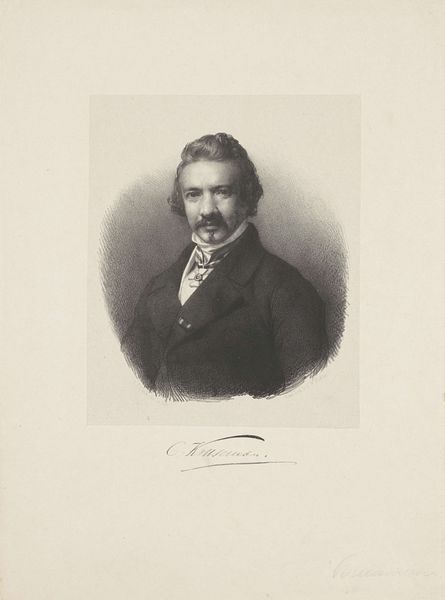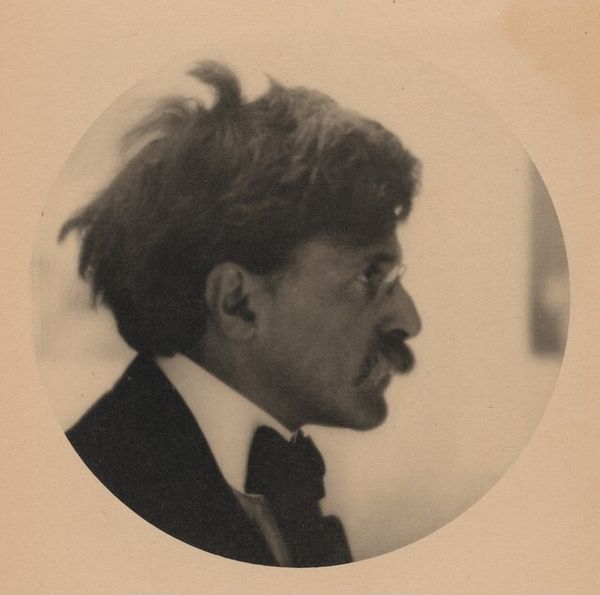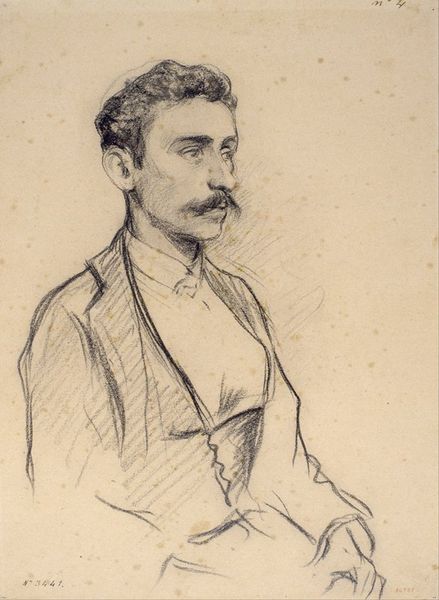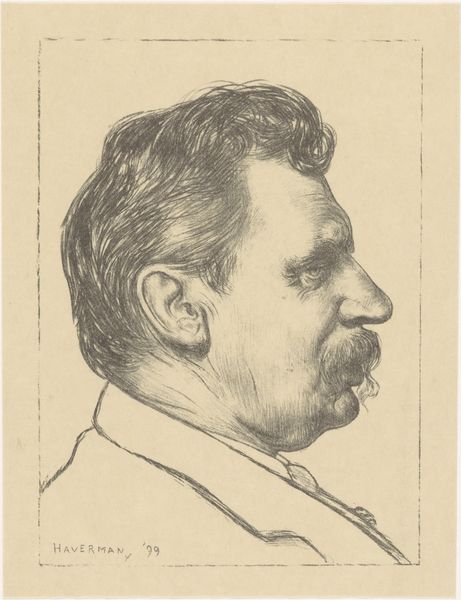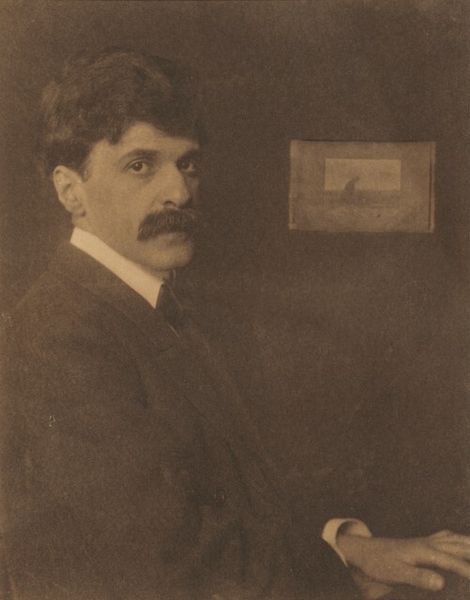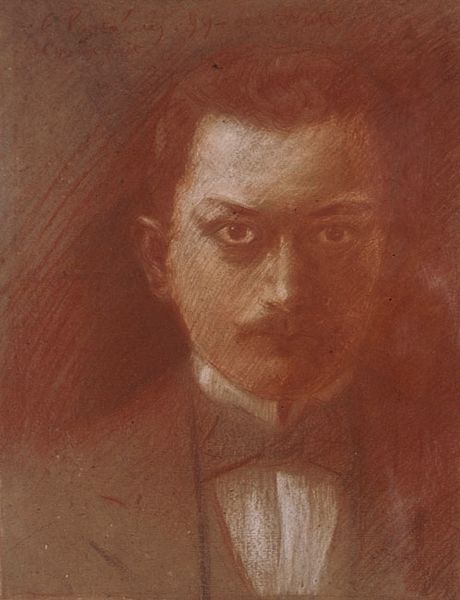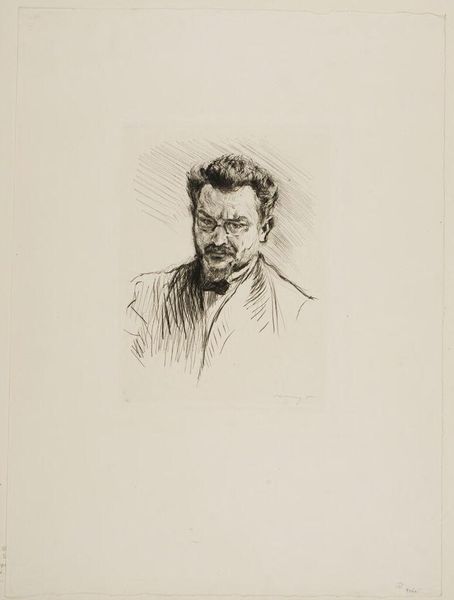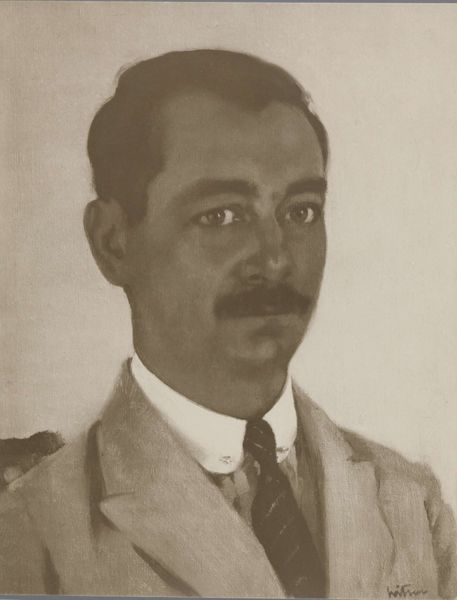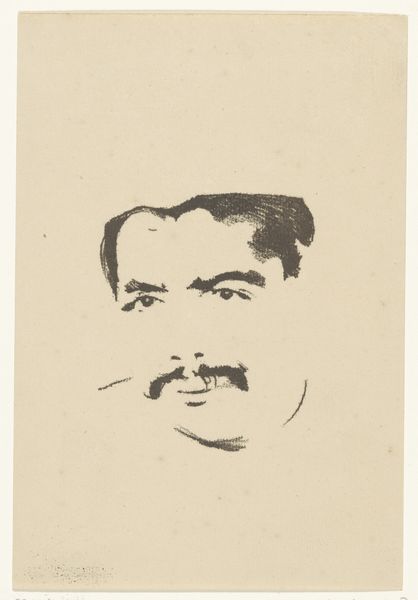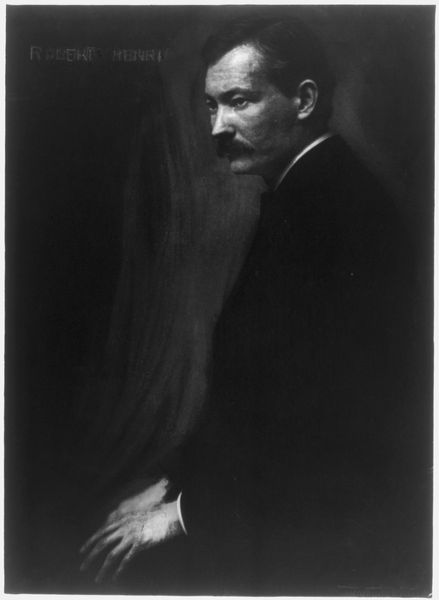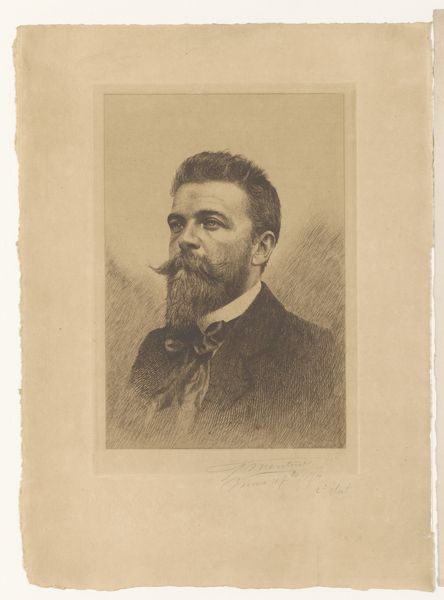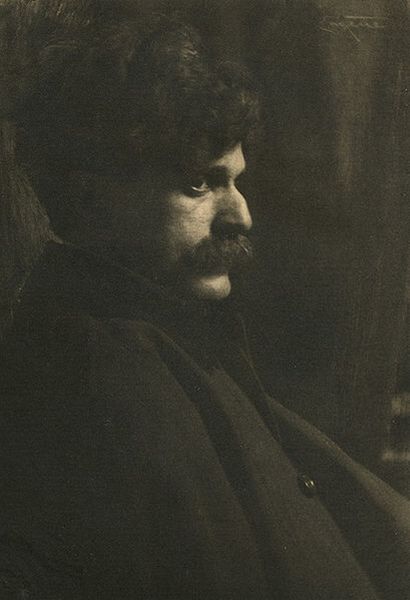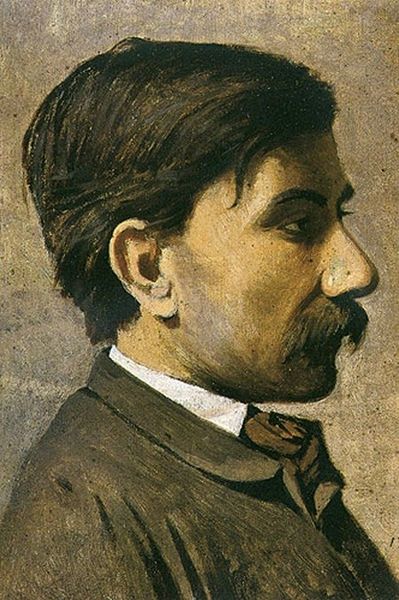
photography
#
portrait
#
self-portrait
#
pictorialism
#
charcoal drawing
#
photography
#
portrait drawing
Copyright: Public domain
Curator: Let's discuss this compelling "Self-portrait" created by Heinrich Kuhn in 1901. The work seems to employ photographic processes rendered to emulate drawing. What's your immediate impression? Editor: It strikes me as rather introspective. The subject's downward gaze and the muted tones lend a sense of melancholy or contemplation, almost as if Kuhn is examining the artist's position within society. Curator: Indeed. Kuhn's involvement in Pictorialism, where photography sought to imitate painting, reflects a specific cultural ambition of elevating the medium itself, to be viewed not as a purely documentary but an art form laboriously made, intervened on, like any etching. We could examine this image as part of Kuhn's project of photographic artistry. Editor: Absolutely, the photograph emulates charcoal drawing. And this approach connects strongly with broader cultural shifts. Looking at this portrait through a feminist lens, you see this soft focus style of pictorialism being preferred by women in fine art photography for its more “feminine” attributes. Are we perhaps meant to understand this subject's identity as somewhat vulnerable or “softened” as a result of it, perhaps as a comment on the social construction of masculinity? Curator: I find it interesting to consider how his manipulations of photographic materials served to bridge a perceived gap between "high art" and the reproducible image, challenging those established hierarchies. Kuhn and other members of the Viennese Camera Club wanted recognition as more than documentarians. This piece seems to shout “look how meticulously this image has been rendered.” Editor: True. The conscious effort to manipulate the photographic medium does speak volumes. Perhaps he's engaging in a dialogue with tradition, or maybe it's about reclaiming power—the power to define the narrative and visibility—in a time where photography was democratizing representation. What do we think about the implications of “self-portrait” here too, I wonder? Does the gaze seem to consider social factors around Kuhn, or only inward reflection? Curator: It could be both internal and external. The choice of medium becomes as crucial as the subject's likeness. Pictorialism becomes both method and message for someone who seemed to aspire to move beyond merely “taking” pictures. Editor: It layers so many points for considering the individual and the world. A really profound comment on self, gender, and creative production. Curator: It certainly challenges our assumptions about photographic "truth," showing that images are always constructed, crafted, never simply captured. Editor: Indeed. A fitting end. It speaks to identity, artistic intention, and a crucial moment in the history of representation.
Comments
No comments
Be the first to comment and join the conversation on the ultimate creative platform.
